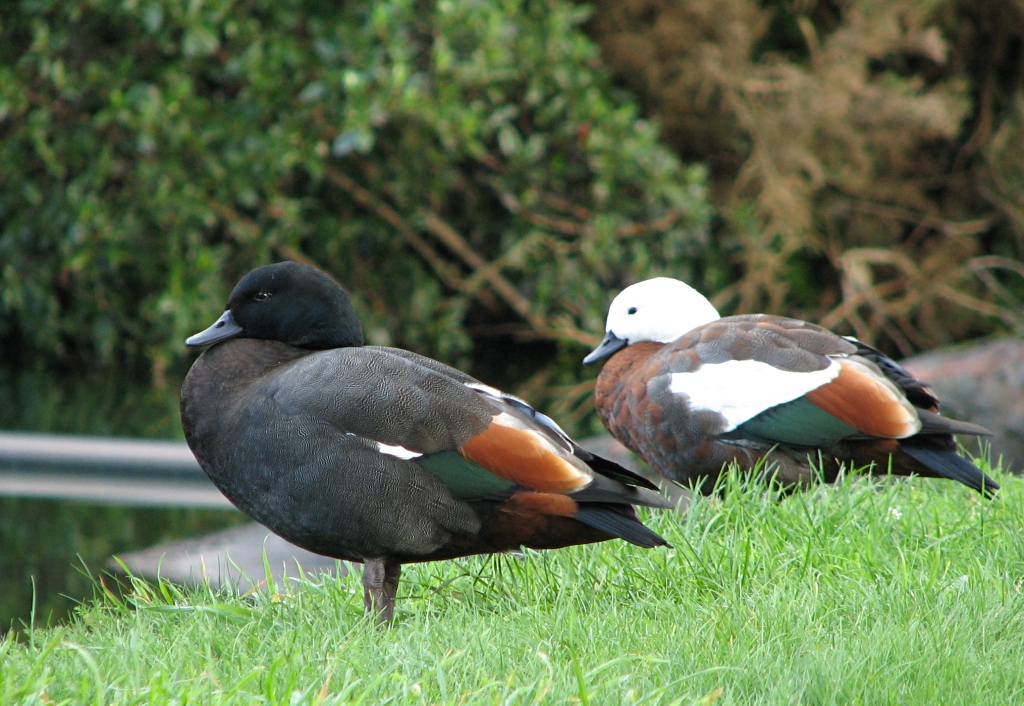- Paradise Shelduck
Taxobox
name = Paradise Shelduck
status = LC | status_system = IUCN3.1

image_width = 200px
image_caption = Male, left, female, right, at [http://www.sanctuary.org.nz/ Karori Wildlife Sanctuary]
regnum =Animal ia
phylum = Chordata
classis = Aves
ordo =Anseriformes
familia =Anatidae
genus = "Tadorna "
species = "T. variegata"
binomial = "Tadorna variegata"
binomial_authority = (Gmelin,1789 ), the male has a black head and barred black body, the female a white head with a chestnut body.
The Paradise Shelducks usually live as pairs, grazing on
grass and weeds, and will raid crops, particularly when molting.Paradise Shelducks form long-term pair bonds, often lasting for life. They have a long breeding season which is between August through December. They reach sexual maturity after two years, and build nests hidden in high grass, hollow trees or beneath rotting logs, and is lined with grass and feathers. Chicks
fledge after eight weeks.Paradise Shelducks were uncommon prior to
Europe an settlement, however changes to habitat caused by the conversion offorest topasture , and the deliberate provisioning on ponds byhunting groups, has led to a large increase in the numbers of these ducks.The genus name "Tadorna" comes from Celtic roots and means "pied waterfowl", essentially the same as the English "shelduck".cite book| last =Kear| first =Janet| title =Ducks, Geese, and Swans| publisher =Oxford University Press| date =2005| pages =420| url =http://books.google.com/books?id=MfrdBcKd79wC&pg=RA1-PA439&lpg=RA1-PA439&dq=crested+shelduck&source=web&ots=RS734hgSmI&sig=006C0Hb6hpDK1aAEwu-ivfssJBk#PRA1-PA441,M1| isbn =0 19 861008 4 ]
References
External links
* [http://www.teara.govt.nz/TheBush/NativeBirdsAndBats/WetlandBirds/5/en Paradise shelducks – pūtangitangi] "Te Ara: The Encyclopedia of New Zealand"
* [http://www.sanctuary.org.nz/ Karori Wildlife Sanctuary]
*IUCN2006|assessors=BirdLife International|year=2004|id=47161|title=Tadorna variegata|downloaded=12 May 2006 Database entry includes justification for why this species is of least concern
Wikimedia Foundation. 2010.
